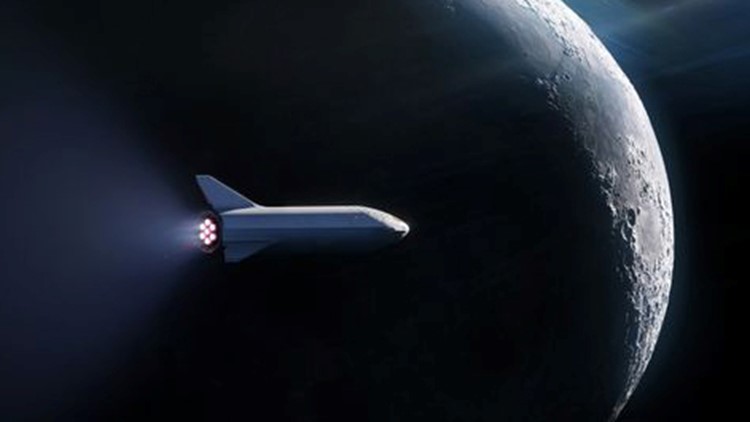SpaceX's plans to send a Japanese billionaire and several others beyond low-Earth orbit on the company's Big Falcon Rocket, revealed in-depth last week, have been updated thanks to a flurry of recent tweets by CEO Elon Musk.
Yusaku Maezawa, one of the top 20 wealthiest people in Japan and a serious art enthusiast, was announced as SpaceX's first paying customer for a BFR-propelled trip around the moon as soon as 2023 during an event in California last week. Both billionaires said Maezawa would take six to eight artists with him in the hopes that works inspired by the trip would capture imaginations back on Earth.
Since then, Musk has answered several questions about the lunar trip, SpaceX's plans for hardware and even touched on a timeline for the establishment of a colony on Mars.
Missions will be streamed and VR-compatible
For space enthusiasts unable to make the trip, Musk announced that SpaceX will have the next best thing: High-definition live streaming that will support virtual reality formats.
SpaceX will obviously have to install 360-degree cameras inside and on the exterior of BFR that support full field-of-view streaming, but what remains to be seen is how VR technology will advance between now and 2023 – the streams could end up supporting more features, such as rendering 3D objects in real-time based on camera input, known as photogrammetry. By then, the resolution of VR headsets, battery life and ability to function untethered from a computer should have all improved, too.
But how will SpaceX transmit data during a communications blackout? Musk had an answer for that, too.
Starlink should be active for lunar missions
Starlink, the ambitious SpaceX project to envelop Earth in a constellation of internet-beaming small satellites, is following a similar timeline to that of the lunar missions.
If all goes according to plan, SpaceX by then should have at least a portion of its planned 4,425-satellite network operating in low-Earth orbit. Its current projections call for the addition of at least 7,000 more in an even lower orbit, improving the latency of internet connections for customers on the ground who will only need a laptop-sized terminal to access the constellation.
But as with many Musk projects, Starlink won't just be limited to Earth – he expects that a small constellation could operate around the moon, too. When asked how SpaceX would handle live streaming VR from the dark side of the moon, which has historically resulted in a communications blackout, Musk said "Starlink should be active by then."
This reinforces the idea that SpaceX could also bring Starlink – and internet connectivity overall – to its long-term goal of a colony on Mars.
Establishing SpaceX's base on the red planet
Since its founding in 2002, SpaceX's long-term purpose has been to make humanity a "multi-planetary species" with the development of a self-sustaining colony on Mars.
Expanding on earlier details of his company's plans, previously announced in 2016 as the massive Interplanetary Transport System and refined in 2017 as the smaller BFR, Musk said the latest roadmap shows that a red planet base could be established as soon as 2028.
In a tweet last week, Musk uploaded a rendering of several updated Big Falcon Spaceships, or BFS, parked vertically on Mars with a small base made of futuristic, hexagonal panels and a greenhouse in the background.
Musk's ambitious timeline for that development, though, will likely see further refinement as the company grapples with its short-term targets of returning astronauts to space from U.S. soil in the latter half of next year, continued resupply missions of the International Space Station and deployment of the Starlink constellation. Those first two goals to support NASA, Musk noted last week, are the company's current – and most important – priorities.
Trained astronauts on BFR's lunar mission?
Though not announced by Musk, chatter across spaceflight forums and SpaceX-centric websites indicate that it would be hard to imagine a full-blown lunar flyby without trained, experienced astronauts on board. After all, Maezawa only purchased six to eight seats for artists, one for himself, and possibly even more than that – but BFS, measured at 180 feet in length, is a large spacecraft.
Four-time NASA astronaut and year-long ISS tenant Scott Kelly responded to Maezawa on Twitter and made it clear: He'd be happy to join.
"Yusaku Maezawa, this will be a great adventure! Good luck on your trip and if you need someone with a little experience to go with you, my schedule is wide open in 2023," he said.



